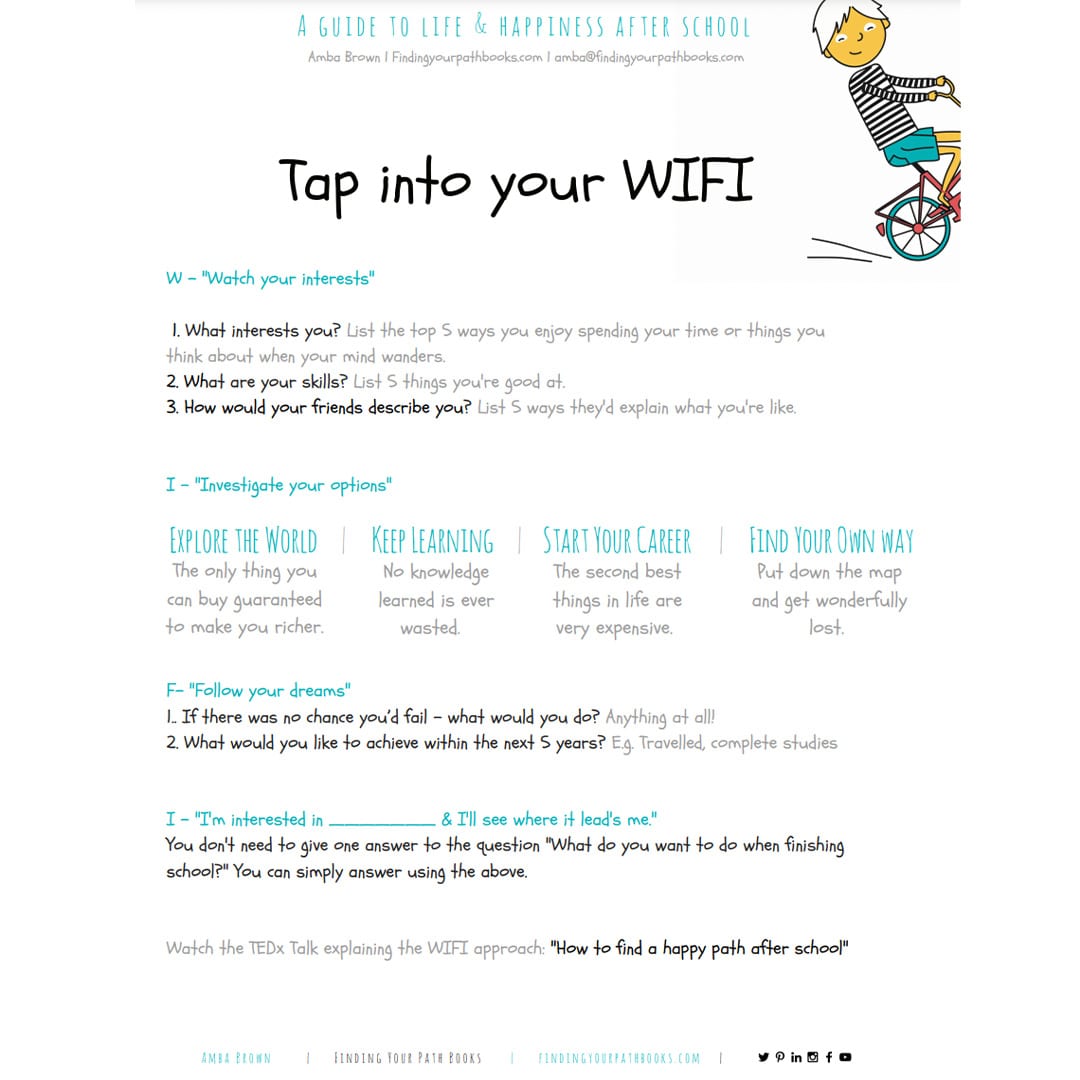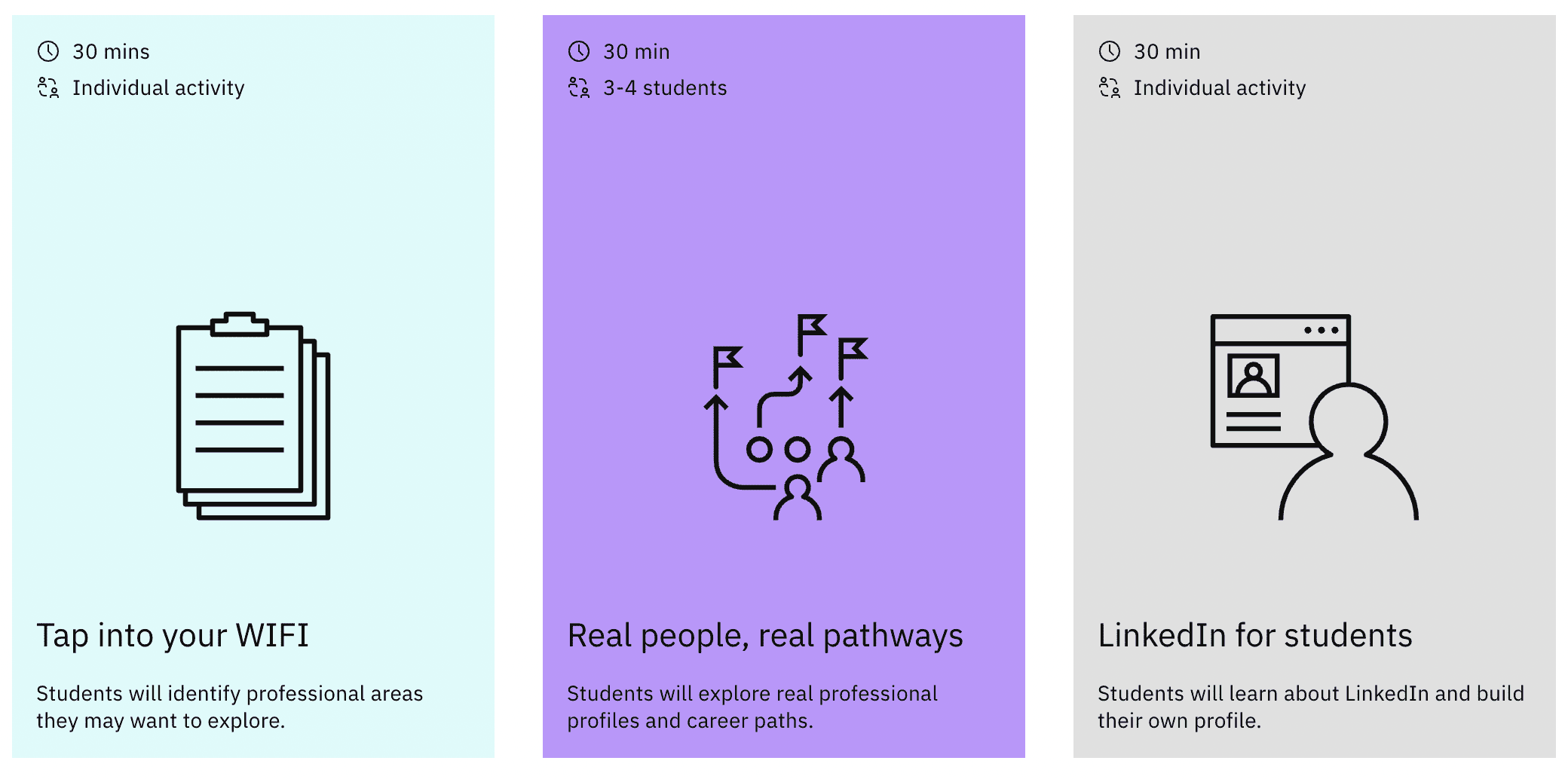As a history teacher, I believe that part of my job is giving students the thinking, reading, writing, and speaking skills they’ll need to succeed in the workplace. That’s why I was so excited to check out IBM’s Career Readiness Toolkit For Teachers. It’s full of lesson plans, shorter activities, and resources I can build right into my curriculum. In this article, I share how I use the toolkit to help my students prepare for their future.
Practicing interviewing skills
I use “Tap Into Your WIFI” to have students conduct imaginary informational interviews with historical figures. You could do the same with famous scientists, mathematicians, or authors! After I have students read short profiles on people in history, they group into pairs. They answer the questions on the “Tap into your WIFI” worksheet.
Next, I have them imagine how that person would answer the interview questions found in the “Real People, Real Pathways” activity. Then, they take turns interviewing each other. Sometimes, I use this as a class warm-up to help students think about their own identity. Then I tie this warmup to our class material.
For example, if we’re studying the Civil War, I have students fill out a WIFI on President Lincoln. Then they contrast their answers with his imagined answers. It’s also a really great warmup to use when you introduce a group project since it helps students use their strengths to work together.

Writing professional summaries
In my classroom, students create a professional summary on historical events and people. I use the Framing Tip for Teachers in the “LinkedIn For Students” activity to teach students how to write a professional summary. Then, I explain how to showcase experience, skills, and education. Finally, I have students follow the “LinkedIn Profile Checklist” template provided in the “LinkedIn For Students” activity, which teaches them how to write a professional summary. Once they’re done writing, I’ll have them read their professional summary to their classmates, which helps them with both their public speaking skills and their ability to “sell” an idea, event, or person.

Creating a professional profile
I also use the “LinkedIn For Students” activity to teach my students to build a LinkedIn Profile on a historical figure. After researching someone in history, we watch the video “LinkedIn for Students: Top Five Profile To-Do’s.” Then, they work independently using the “Building a great LinkedIn profile tip sheet” resource to build the full profile. This includes a professional picture, headline, education, and experiences of the person they studied. Finally, I have them fill out the “Career Exploration Self-Assessment” as their character.

Networking
Once students build their profiles on a historical figure using “LinkedIn For Students,” they answer the questions provided in the “Real People, Real Pathways” activity as their historical character. Once they answer these questions independently, they ask each other these same questions, what I call a “Meeting of the Minds”! My students have a lot of fun learning about each other’s historical figures. It’s easy to do in a breakout room or in person. And again, they are honing a great skill set — how to network and talk to each other! To close our networking experience, we end with a large class discussion where my students discuss the “additional reflection questions” found in the “Cool Down” in the Career Explorations Lesson.

Interested in exploring The Career Readiness Teacher Toolkit? Check it out here.


